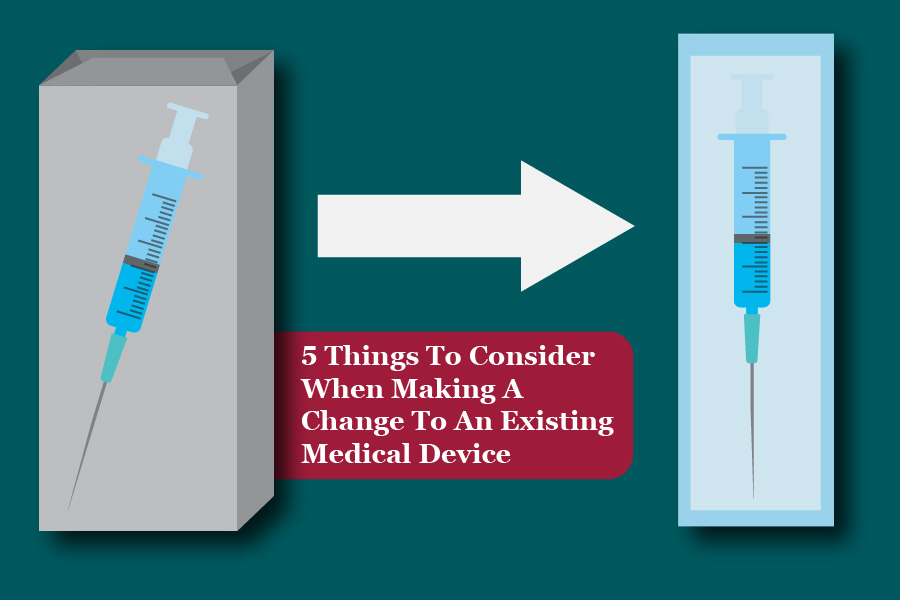In this constantly changing world, it is important that your products keep up with the latest technology available. With medical devices now being in the form of wearables, long gone are the days when patients needed to be hooked up to a system to monitor their health.
Continuously improving your product requires you to make changes, and some of these changes may require notifying the FDA in the form of supplemental reports, 510(k)s, etc.
When making a change to an existing device, below are the five categories that you must consider its impact on.1
- Product Label
- Change to technology/engineering.
- Software changes
- Material changes and
- Change made to improve the safety and efficacy of the device.
Impact on the product label could be in the form of changes to indications for use, changing it from a single-use device to a reusable device, change in the instructions for use based on post-market feedback, etc.
Changes to the technology may impact its mode of operation or require changes in the sterilization processes if applicable. Technology changes also raise additional questions about the safety and efficacy of the device and the changed product may no longer be substantially equivalent to its predicate if a 510(k) clearance was obtained.
Software changes are one of the easiest to make however, sometimes, a small change may make the unchanged sections of the software vulnerable to additional risks. Software bug fixes are common, however, the change must be evaluated diligently to assess whether it compromises the cybersecurity of the system or for its impact on clinical functionality such as its ability to make clinical decisions, etc.
Material changes have an impact on devices that directly or indirectly are in contact with body tissues or fluids. This in turn raises concerns on the biocompatibility of the product.
The impact of all these factors must be considered within the realm of risk assessment and this will allow for making an informed decision about whether notification to the regulatory authority is required. We have seen companies often miss this step and get into trouble during an audit for not notifying the FDA when a supplementary submission was required.
Need help in conducting regulatory change assessments? Call us today at +1 248-987-4497 or email us at info@emmainternational.com
1FDA (Oct 2017) Deciding When to Submit a 510(k) for a Change to an Existing Device retrieved on 02/23/2021 from https://www.fda.gov/media/99812/download






